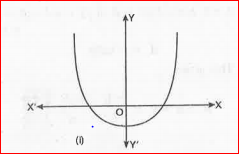Form the pair of linear equations in the following problems and find their solutions (if they exist) by any algebraic method :-A fraction becomes 3/4 if 1 is subtracted from denominator. If 3 is added to both the numerator and denominator, it becomes 5/6 . Find the fraction.Solution in Punjabi
Step by step video & image solution for Form the pair of linear equations in the following problems and find their solutions (if they exist) by any algebraic method :-A fraction becomes 3/4 if 1 is subtracted from denominator. If 3 is added to both the numerator and denominator, it becomes 5/6 . Find the fraction. by Maths experts to help you in doubts & scoring excellent marks in Class 10 exams.
Updated on:21/07/2023Topper's Solved these Questions
- PAIR OF LINEAR EQUATIONS IN TWO VARIABLESBOOK - MBDCHAPTER - PAIR OF LINEAR EQUATIONS IN TWO VARIABLESEXERCISE - EXERCISE
183 Videos
- INTRODUCTION TO TRIGONOMETRYBOOK - MBDCHAPTER - INTRODUCTION TO TRIGONOMETRYEXERCISE - EXERCISE
176 Videos
- POLYNOMIALSBOOK - MBDCHAPTER - POLYNOMIALSEXERCISE - EXERCISE
51 Videos
Similar Questions
4 chairs and 3 tables cost ? 2100 and 5 chairs and 2 tables cost ? 1750. Represent this situation algebraically and graphically.
View SolutionIn △ABC, right angled at A, if AB = 12 cm, AC = 5 cm and BC = 13 cm, find all the six trigonometric ratios of angle B.
View SolutionThe graphs of y = p (x) are given in figure below, for some polynomials p (x). Find the number of zeroes of p (x), in each case.
 .
.
View SolutionThe sum of the numerator and denominator of a fraction is 8. If 3 is added to both of the numerator and the denominator, the fraction becomes 34. Find the fraction.
View SolutionFrom the pair of linear equations for the following problems and find their solution by substitution method.
A fraction becomes 911 if 2 added to both the numerator and the denominator. If 3 is added to both the numerator and the denominator it becomes 56. find the fraction.
View SolutionForm the pair of linear equations in the following problems and find their solutions (if they exist) by any algebraic method :
A fraction becomes 13 when 1 is subtracted from the numerator and it becomes 14 when 8 is added to its denominator. find the fraction.
View SolutionFrom the pair of linear equations for the following problems and find their solutions by substitution method.
A fraction becomes 911 if 2 is added to both the numerator and the denominator. If 3 is added to both the numerator and the denominator it becomes 56. FInd the Fraction.
View SolutionA fraction becomes 9/11 if 2 is added to both numerator and the denominator. If 3 is added to both the numerator and the denominator it becomes 5/6. Find the fraction.
View SolutionA fraction becomes 911 if 2 is added to both numerator and denominator. If 3 is added to both numerator and denominator it becomes 56. Find the fraction.
View SolutionForm the pair of linear equations for the following problems and find their solution by substitution method.
A fraction becomes 911, if 2 is added to both the numerator and the denominator. If 3 is added to both the numerator and the denominator it becomes 56. Find the fraction.
View SolutionForm the pair of linear equations in the following problems and find their solutions (if they exist) by any algebraic method :
A fraction becomes 13 when 1 is subtracted from the numerator and it becomes 14 when 8 is added to its denominator. Find the fraction.
View SolutionForm the linear equations for the following problems and find their solution by substitution method.
A fraction becoms 911 if 2 added to both the numerator and denominator. If 3 is added to both numerator and denominator it becomes 56. Find the fraction.
View SolutionForm the pair of linear equations in the following problems and their solutions (if they exist) by any algebraic method.
A fraction becomes 13 when 1 is subtracted from the numerator and becomes 14 when 8 is added to the denominator. Find the fraction.
View SolutionA fraction becomes 4/5, if 1 is added to both numerator and denominator. If, however, 5 is subtracted from both numerator and denominator, the fraction becomes ½. What is the fraction.
View SolutionA fraction becomes 1/3 if 1 is subtracted from both numerator and the denominator. If 1 is added to both the numerator and the denominator it becomes 1/2. Find the fraction.
View Solution
